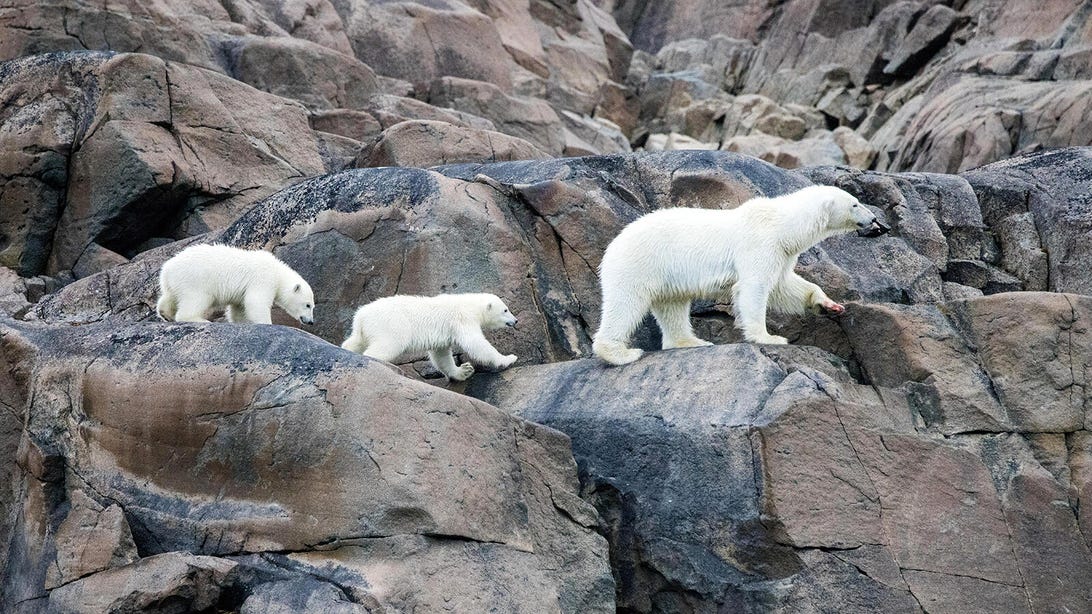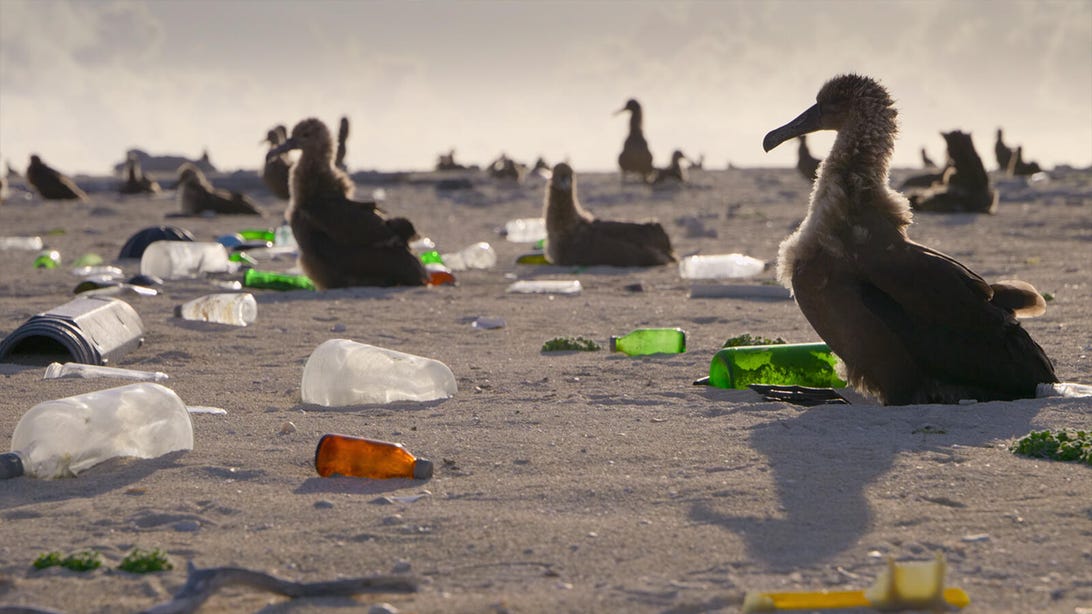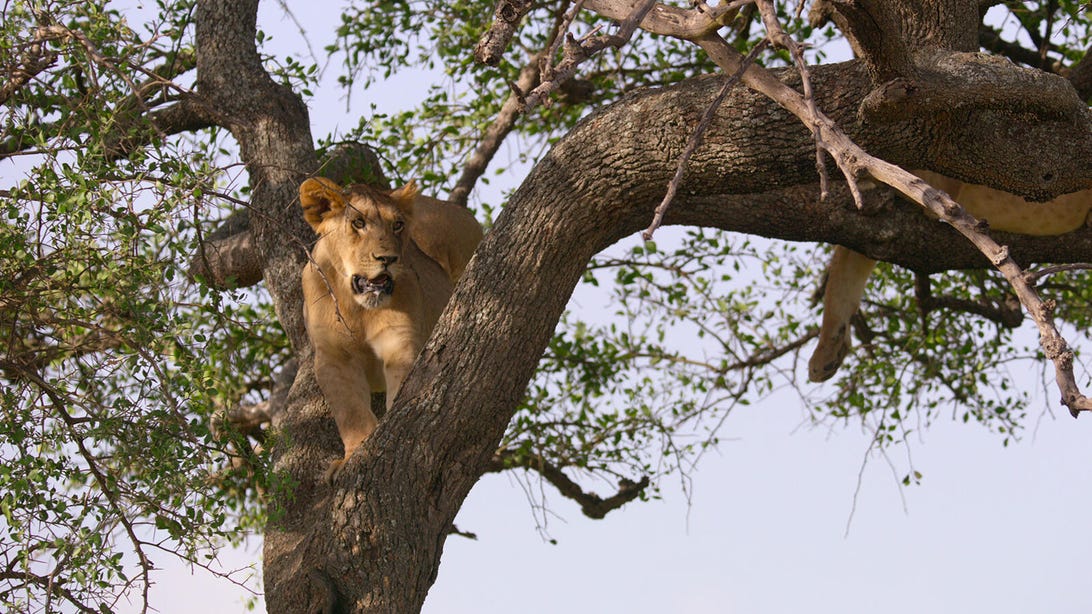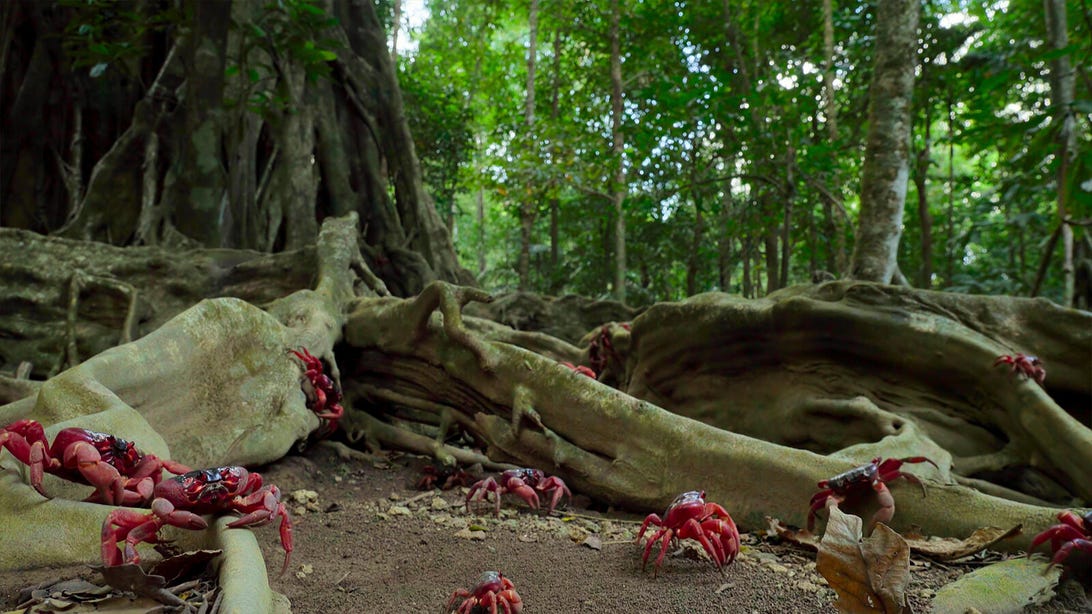Join or Sign In
Sign in to customize your TV listings
By joining TV Guide, you agree to our Terms of Use and acknowledge the data practices in our Privacy Policy.
The 5 Most Amazing Things You'll See in Netflix's Our Planet II
From locusts to mountain lions

Our Planet II
NetflixNetflix's fantastic nature docuseries Our Planet has returned with Our Planet II, this time with a focus on the migratory patterns of animals, whether it's a perilous thousand-mile journey across continents or a perilous swim from one side of a lake to the other. (Most everything in the animal kingdom is perilous, it seems!) Filming these fascinating creatures — mountain lions, lynxes, elephants, penguins, killer whales, and more — used to be relatively simple, but because of climate change and human interaction, it's more difficult than ever.
"I think when we started in this business, you used to, with quite a lot of precision, be able to say to someone, 'OK, come here in September, and this will happen, come here in November, [and this will happen],'" executive producer Keith Scholey told TV Guide. "And to a certain extent, now, that's all just gone out the window. The natural world, the whole world, is becoming very unpredictable. All these wild populations are having to deal with that unpredictability."
While that unpredictably means some advantages for some animals — just watch the bald eagles preying on snow geese, who have to wait longer for food due to unseasonably cold winters, for an example of a winner in this scenario — it's mostly causing chaos. "I think there's probably far more losers than there are winners because of this," Scholey continued.
Our Planet II features its share of scenes rooted in the sad realities of nature (the producers never want to be gratuitous, but they also feel a responsibility to show the natural world as it is), but it's also packed with sights that dazzle and show off the power of nature. Here are five amazing things you'll see in Our Planet II, as selected by executive producers Huw Cordey and Keith Scholey.

Our Planet II
NetflixThe Laysan albatross and its plastic home
One of the most striking images of the series occurs in the first episode: A Laysan albatross chick sits on a sandy Hawaiian Island beach that's littered with discarded plastic. Human interaction is a theme across many of these stories, but none are so obvious as this one. "Nobody's filmed a Laysan albatross in that way before, and I think the plastic story is such a powerful, sobering, and pointed story," Cordey said. Filming these birds came with another challenge: tiger sharks. Usually shy to the point that they'd swim away if a diver got in the water, the sharks during filming were so ravenous that they changed their behavior, including 15-foot tiger sharks nudging the boats. "Another huge shark came by, but this one didn't bump the boat, he bit the boat, and punched through it, so they had to do an emergency run back to safety," Keith Scholey told TV Guide.
A plague of locusts
They may not be very photogenic, but the locusts captured in the first episode of Our Planet II are a sight to behold. "It's a massive challenge covering a locust swarm, because it's very unpredictable and it can happen in days and disappear in hours," Cordey told TV Guide. Shooting during the height of the COVID lockdown, Cordey's team was helped by local crews across multiple countries to capture the insects' migration from Ethiopia into Asia, all while needing to stay ahead of WHO pesticide planes and U.N. intervention. The results are spectacularly creepy: billions of flying terrors casting out the sun across deserts and cities.

Our Planet II
NetflixA mountain lion making a kill up close and personal
Luck is a huge part of capturing nature, and sometimes being in the right place at the right time makes all the difference. That's what happened while filming mountain lions in Chile. "These animals have been studied by scientists for some time, and they've become remarkably habituated to the extent where you can actually film them while on foot," Cordey told TV Guide. "We filmed this mother and her two cubs, and at one point, the mother has a large guanaco [a relative of the llama], which is a pretty large catch. It's so large, and she chases it and rides on its back. And it's an incredible shot and probably one of the most dramatic predation shots ever of a mountain lion, and the mountain lion brings the guanaco down within three meters of the cameraman standing on the ground with a tripod. That kind of shot is probably impossible anywhere else in the mountain lions' range."
The elephants who visited a city
In 2020, a group of wild Chinese elephants stomped across the internet when they took a most unusual journey. "It's kind of a news story, but nobody's put it on a broadcast show before. It's a story that was set in China, and it took place over lockdown when a group of elephants were sort of forced out of their natural forest. And they went on this massive walk trying to find a new forest because of a massive drought. There wasn't enough food. And these elephants just traveled 800 kilometers and ended up almost in one of the largest towns of the region before they were turned back." The pachyderms, in uncharted territory, helped themselves to locals' farms and food and moved on to a city before finally returning home almost two years later with the help of compassionate humans.

Our Planet II
NetflixA carpet of Christmas Island crabs
South of Jakarta, Indonesia, Christmas Island, the "Galapagos of the Indian Ocean," rises from the sea. It's home to one of the most massive migrations in the animal kingdom as the island teems with these tiny crustaceans, who battle modern marvels like roads and cars, as well as natural predators like ants and *gulp* adult Christmas Island crabs. "The Christmas Island crablets returned in billions, and it was the probably the biggest return of these little crablets in 10 years," Cordey said. "It was the second year that we tried; in the first year we got precisely nothing. Nothing can happen year after year. And we decided to invest more money into it the following year, and they came in on Christmas Eve and Christmas. Wow. And it's spectacular." Yes, crab babies are very cute.
Our Planet II is now streaming on Netflix.
